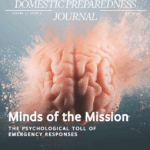
Archives

As economies and populations grow, the food and agricultural security is of increasing concern. This demands proactive investment in risk management and security measures to ensure the sustainability of the global food supply.

Agroterrorism: A Persistent but Overlooked Threat
March 19, 2025
Agroterrorism is not new. Considered a subset of bioterrorism, it has become an increasing concern to the U.S. With so much of the agriculture sector in private hands, preparedness leaders must take extra steps to engage stakeholders and incorporate them into planning efforts.

The Human Factor in Cybersecurity Events: Critical Education Components
March 5, 2025
When considering cyberattack risk, understanding the primacy of the human factor is central in developing plans for continuity of operations and incident response. With the increasing cost of data breaches, it is increasingly important to educate users on best practices and to employ robust security programs.

From Today to Tomorrow: The Emergency Operations Center of the Future
December 11, 2024
The next-generation EOC, which implements cutting-edge technology and AI, does not promise perfect disaster management, but it does mean responders at all levels will have better situational awareness, plan more efficiently, and act faster.

Local-Level Planning for National-Level Threats
October 30, 2024
The authors in this October edition of the Domestic Preparedness Journal share their knowledge and best practices for protecting communities from cybercriminals, nation-state threat actors, and transnational criminal organizations. These threats, which used to be typically handled at the state and national levels, are now local-level concerns that require robust

The Ethics of Data in Disaster Management and Crisis Operations
October 23, 2024
As the demand for evidence-based decision-making continues to grow, emergency management professionals must commit to ethical data practices that respect the needs of the community and the rights of individuals. In times of crisis, data can save lives, but only if managed with care, responsibility, and respect for ethical principles.

Backyard Cybersecurity: The Local Challenge
October 16, 2024
The modern world increasingly relies on rapidly advancing digital technology, and cybercriminals progressively focus on ways to exploit technology’s vulnerabilities. Although higher levels of government and businesses may possess the tools necessary to protect against cyberattacks, local governments often do not.

Malicious and Non-Malicious Cyber Incidents: Education and Preparation
October 9, 2024
Working with stakeholders across an organization to ensure cyber resilience is a part of disaster planning. Education is critical. Helping users understand hackers’ strategies to compromise an organization is foundational, and forward-looking efforts can help prevent oversights or critical failures during larger events.

Securing Cities: The Fight Against Local Level Cyberthreats
October 2, 2024
As digital threats against local governments and private entities grow more sophisticated, the need for action becomes urgent. Cybersecurity is a shared responsibility, and at the local level, it forms the bedrock of the collective digital safety and security for all. Every citizen, agency, and organization must play a part

National Laboratory Partnerships: Linking Operations and Research
September 25, 2024
The September 11 terrorist attacks in 2001 spurred a pivotal change in the way the U.S. approaches preparedness for threats to the homeland. In recognition of National Preparedness Month, the Pacific Northwest National Laboratory showcases how national laboratories address homeland security threats by developing the technology and other resources first





